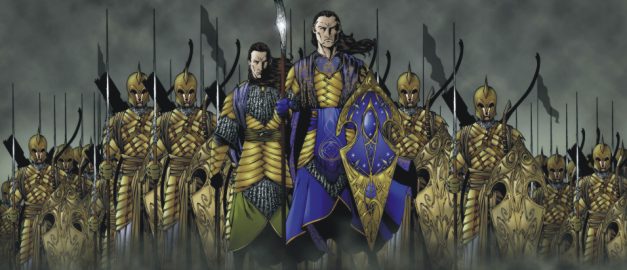Good morning gamers,
Minas Tirith: Core Choices
The biggest problem that faces most Minas Tirith players
(especially those just starting out in the hobby) is the sheer number of
choices available in the Minas Tirith list. With three epic heroes (Aragorn,
Gandalf, Boromir), a wide variety of lesser-Captain heroes (Faramir, Madril,
Cirion, Iorlas, Hurin, Ingold, Knights of the White Tower, Captains of Minas
Tirith, Kings of Men if you don’t take any named hereos), and a few
cheap-but-basically-glorified-Warrior heroes (Denethor, Damrod, Beregond,
Pippin), the choices arrayed for you on just the hero front is astounding (and
while you might want to get a good chunk of these heroes for what they provide, getting too many of them will eat through your points limit quite quickly).
Then you get to the warriors: with multiple choices for
heavily-armored infantry (Warriors of Minas Tirith, Citadel Guard, Guards of the Fountain
Court, Osgiliath Veterans), bow-armed models (Warriors of Minas Tirith, Citadel
Guard, Osgiliath Veterans, Rangers of Gondor), cavalry models (Knights of Minas
Tirith, mounted Citadel Guard), and siege engines (Bolt Throwers, Trebuchets), getting
a good mix of models can be really, REALLY hard. Often times, there’s a trade
between a) how high you want a models’ stats to be, b) how many models you want in your army, and c) the money spent acquiring the models that you want. With all of this
frustration in mind, the list I’ve chosen today isn’t that expensive to acquire
and gives you plenty of room to expand and modify. Know that I’ll be talking
about alterations you can make to the list to accommodate different playing
styles at the end of the post, but this is the list that’s not only well-tailored to the guidelines
we’ve identified in the last few posts, but also fits my personal preference
for playing Minas Tirith. With that, let’s look at the list!





